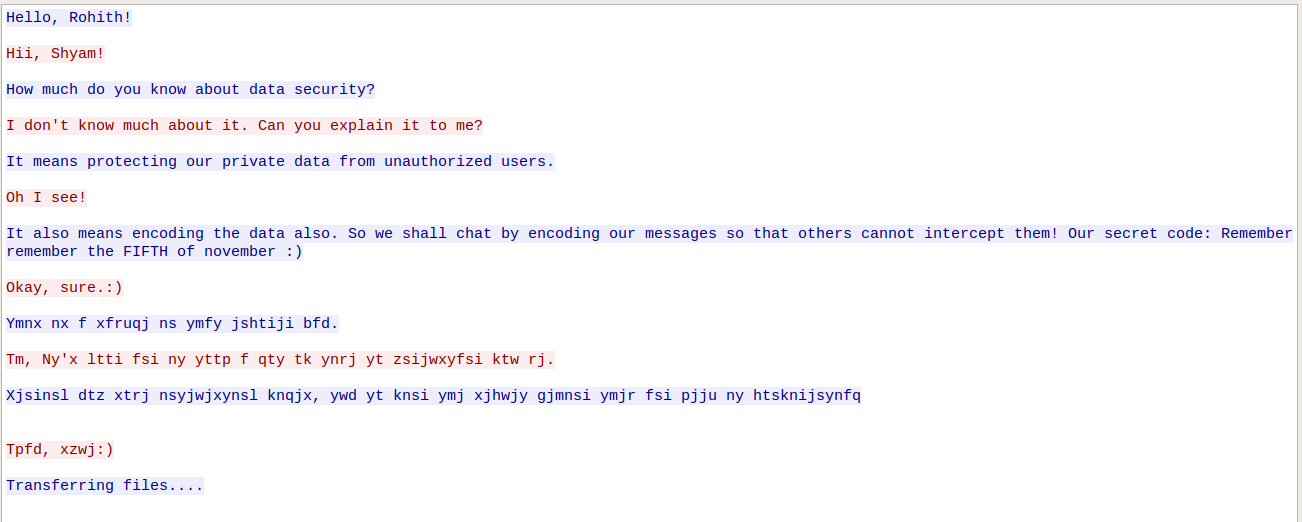tl;dr
- Decoding the strings found in TCP stream 0.
- Analysing and extracting data sent via different ports of TCP.
- Using character-wise caesar from the extracted data.
- Zip cracking
Challenge points: 879
No. of solves: 12
Challenge Authors: Sh4d0w & g4rud4
Challenge Description

You can download the challenge file from Mega or G-Drive
Writeup
We are provided with a pcap file. Let’s start our initial analysis.
We can see so many TCP packets in the capture file and the description says that it was a chat between two friends. So let’s follow the TCP stream and see if anything is interesting in it.

We do see a chat between 2 people. Also, we can find some encoded strings. The secret code: Remember remember the FIFTH of november :) does hint out something. We can assume the encoded strings are ROT5. Decoding them, we get;
1 | Rohith: This is a sample in that encoded way. |
As the chat between them says that some files have transferred. And we can see that from TCP Stream 2, extra data with 800 bytes is transferred in two different destination ports(444 & 81). We can assume that the two files have been transferred.
Extracting the data sent to the above-mentioned ports and applying Caesar cipher on the two files, we get the file structure of a PDF file and a ZIP file.


After opening the PDF and we find extra spaces in the last page of that file. It says “NOTHING HERE :( DON’T WASTE YOUR TIME“.
So it’s just a rabbit hole.
After a brief observation, we see that the ZIP is password protected. So, we use fcrackzip in dictionary mode to crack the password,

The password is johnjandroveclarkmichaelkent.
Extracting the file from the zip gave a PNG image.

Simple LSB steg can be used to get the flag. We used the popular tool zsteg for this.
FLAG: inctf{3ach_4nd_3v3ry_s3cre7_inf0rm4t10n_w1ll_b3_kn0wn_by_wir3shark!!!!!_:)}